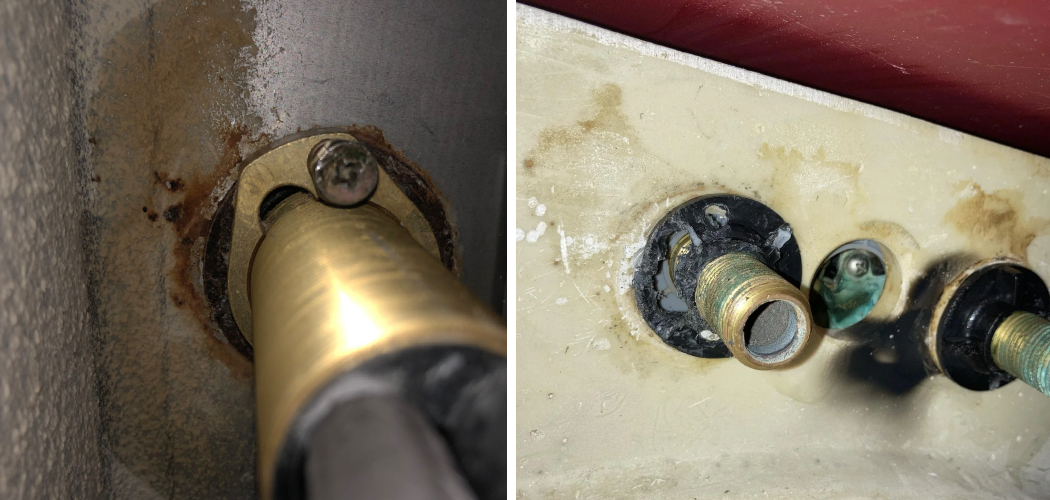Do you have a rusted faucet nut that won’t budge? In this blog post, we will teach you how to remove it. We will provide step-by-step instructions on how to do so, as well as tips and tricks for making the process easier. So if you’re struggling to get that pesky nut off, stay tuned! We’ve got you covered.
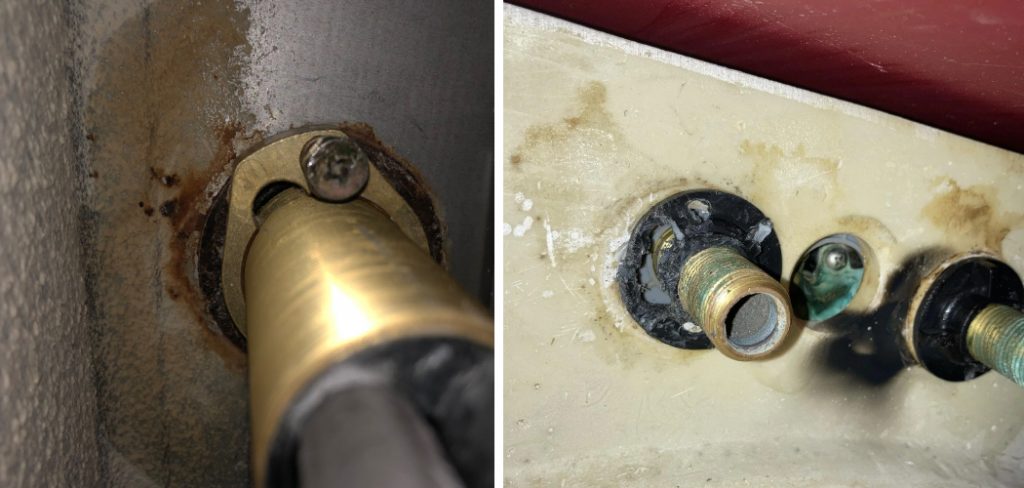
When a faucet nut becomes rusted, it can be difficult to remove. In some cases, the nut may even strip. If you’re having trouble removing a rusted faucet nut, don’t worry – there are several methods you can try. In this blog post, we’ll discuss a few methods of how to remove rusted faucet nut. We’ll also provide some tips for preventing the nut from becoming rusty in the first place. Let’s get started!
Why May You Need to Remove Rusted Faucet Nut?
There can be many reasons why you may need to remove a rusted faucet nut. Such as:
1. To Replace the Valve
One of the most common reasons for needing to remove a rusted faucet nut is to replace the existing valve. This can be due to normal wear and tear leaks or other issues with the old faucet. It also helps to have a replacement valve on hand before you start so that you can easily switch out the old one and get your faucet back up and running quickly.
2. To Install New Faucets
Another reason that you may need to remove a rusted faucet nut is to install a new faucet. This may be necessary if you are upgrading your kitchen or bathroom or if you need a different type of faucet for the plumbing in your home.

3. To Repair Damaged Faucets
If your faucets are showing signs of wear and tear, such as leaks or other issues, removing the rusted faucet nut may be necessary to fix or replace the damaged components. Also, if your faucets are old and outdated, removing the rusted faucet nut may be required to replace them with newer models.
Tools You May Need to Remove Rusted Faucet Nut
- Wrenches
- Pliers
- Durable gloves
10 Methods of How to Remove Rusted Faucet Nut
1. Use Penetrating Oil
To remove a rusted faucet nut, start by applying a penetrating oil or rust remover to loosen the corrosion. Leave the oil on for at least 15 minutes before trying to loosen the faucet. But you have to make sure that you have the right oil for that specific faucet.
2. Use Heat
Another way to remove a rusted faucet nut is to use heat. Applying heat can help loosen the corrosion and make it easier to loosen the nut. You can do this by using a propane torch or hot water, depending on which method works best for your specific situation.
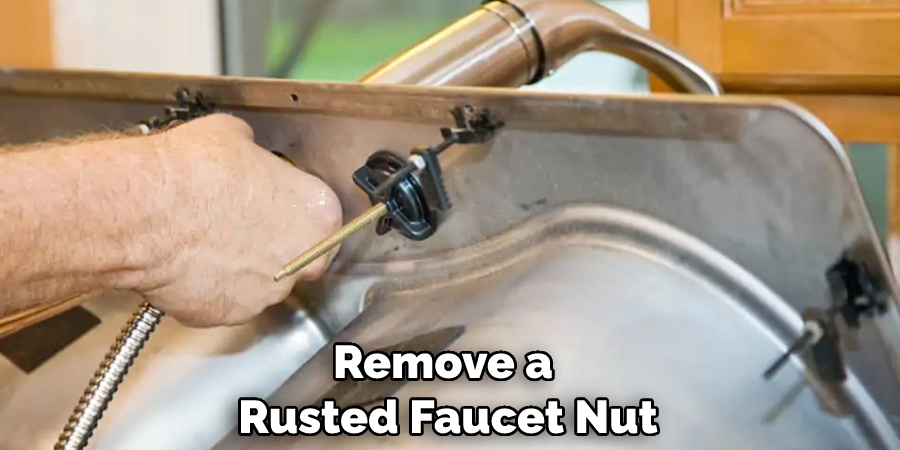
3. Use a Wrench
A traditional wrench can also be used to remove a rusted faucet nut. Start by wrapping the wrench with some duct tape to help prevent any scratches or damage to the surface of your faucet. Then, use the wrench to carefully loosen and remove the nut.
4. Use a Pipe Wrench
If you find that a traditional wrench doesn’t work well for removing the faucet nut, you may want to try using a pipe wrench instead. This type of wrench is designed to provide more leverage and grip, which can help loosen the rusted nut with ease.
5. Use Vice Grips
Another tool that can be used for removing a rusted faucet nut is vice grips. Vice grips are designed to provide extra grip, which can come in handy when loosening and removing stubborn nuts or bolts.
6. Use Sandpaper
One simple and inexpensive way to remove a rusted faucet nut is by using sandpaper. Start by wrapping the sandpaper around the faucet and then use it to gently scrub away at the corrosion. This can help loosen up the nut and make it easier to remove.
7. Try a Drill
If you have a power drill handy, you may want to try using that to remove your rusted faucet nut. Simply attach a drill bit to the end of your power drill and then use it to carefully grind away at the nut until it’s loose enough to remove by hand.
8. Use a Hammer
Another option for removing a rusted faucet nut is to use a hammer. By gently tapping on the nut with a rubber mallet or similar tool, you can help loosen up the corrosion and make it easier to remove.
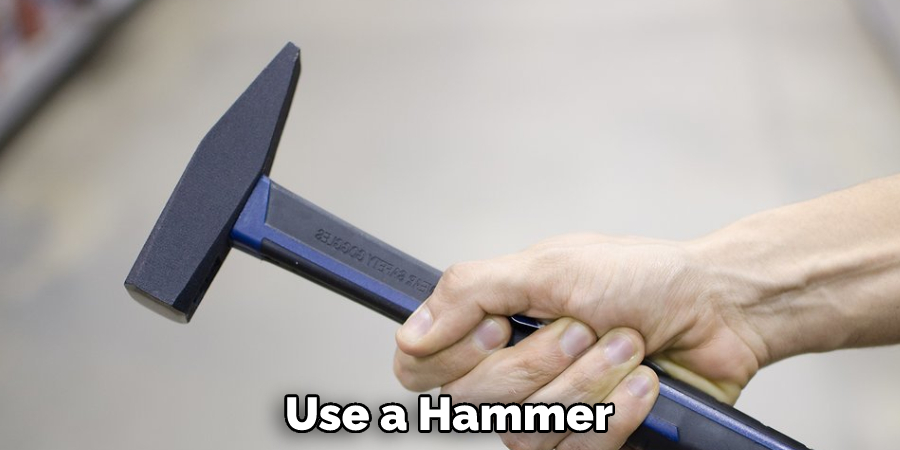
9. Try a Heat Gun
A heat gun, which is similar to a propane torch but smaller and easier to use, can also be used to remove a rusted faucet nut. Simply apply the heat directly to the nut, making sure not to damage any other parts of your faucet in the process.
10. Consider Replacing Your Faucet
In some cases, the best way to remove a rusted faucet nut is by simply replacing the entire faucet. If your faucet is old or outdated and you’re planning on remodeling your kitchen anyway, this could be a great option that can help save you time and hassle in the long run.
If you’re struggling with a rusted faucet nut and are looking for an effective way to remove it, there are several options worth considering. Whether you choose to use penetrating oil, heat, a wrench, vice grips, sandpaper, a drill, a hammer, or a heat gun will depend on your specific situation and what works best for you.
In some cases, it may even be worth considering replacing your faucet altogether to save yourself the hassle and frustration of working with a rusted faucet in the future. Whatever method you choose, just be sure to proceed with caution and always exercise care when dealing with any potentially dangerous tools or materials.
Frequently Asked Questions
What Precautions Should You Take When Removing a Rusted Faucet Nut?
One of the most important things to keep in mind when removing a rusted faucet nut is to take proper precautions to avoid injury. This may include wearing protective gloves, goggles, or other safety gear as appropriate for your situation.
In addition, be sure to use caution when applying heat or pressure to the nut, as these techniques can be potentially dangerous if not used correctly. Another key consideration when removing a rusted faucet nut is to take your time and be patient throughout the process. Rushing through the removal process can lead to mistakes or accidents, so it’s important to carefully assess your situation and approach each step with care and deliberation.
Can I Use Chemical Remedies to Remove a Rusted Faucet Nut?
There are a number of different chemical remedies that you can use to remove a rusted faucet nut, including rust removers and penetrating oil. Both of these products work by softening the rust around the nut and helping to loosen it from its place on the faucet.
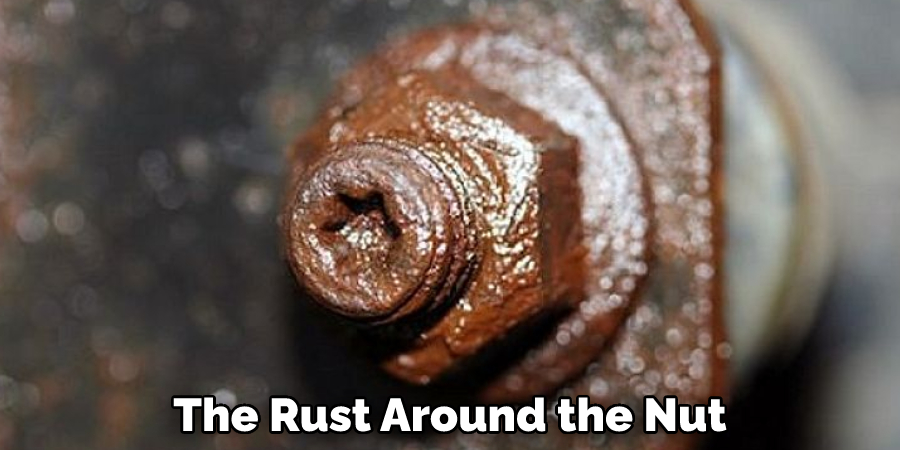
However, it is important to keep in mind that these types of chemicals can also be corrosive, so you should always use them with caution and take the necessary safety precautions. Additionally, if you are using a chemical remedy to remove a rusted faucet nut, be sure to wear gloves and protective eyewear at all times.
How Much Heat Should I Apply When Removing a Rusted Faucet Nut?
The amount of heat that you should apply when removing a rusted faucet nut will depend on the severity of the rust and your specific situation. In general, applying heat in moderate amounts can help to soften the rust around the nut and make it easier to remove.
However, it is important to be careful not to apply too much heat, as this can potentially damage the faucet or other parts of your sink. As a general rule, you should start with moderate heat and then gradually increase it if necessary.
Conclusion
Replacing a faucet is not the hardest task but it can be daunting if you’ve never done it before. You can avoid paying someone to do something so small by following these simple steps on how to remove rusted faucet nuts. With a little time and patience, anyone can do it!
Now that you know how to remove rusted faucet nut, it’s time to apply that knowledge. With a little elbow grease and patience, you’ll be able to get your old faucet working like new again. Just remember to take your time and use the right tools for the job, and you’ll be just fine. Thanks for reading!
You Can Check It Out to Keep Your Drains Clean

